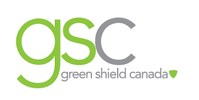Osteoarthritis
Osteoarthritis or OA, occurs when the protective cartilage on the ends of bones wears down over time, resulting in join swelling and inflammation, joint pain and stiffness and decreased range of motion. Although any joint can be damaged by OA, the most common joints affected are the joints of the neck, lower back, knees, hips, the ends of the fingers and the base of the thumb.
Causes & Risk Factors
Causes include previous joint injuries, poor biomechanics, bone deformities and a genetic predisposition for developing OA. Women, elderly, and overweight populations, as well as people working in occupations where repetitive tasks are performed are more at risk of developing OA.
|
Symptoms
Osteoarthritis symptoms develop slowly and worsen over time. Symptoms can include:
- Joint pain during or after movement
- Increased pain and stiffness on waking up or with weather changes
- Joint tenderness
- Decreased flexibility
- Development of nodes or bone spurs
Diagnosis
You should see your doctor if you develop joint pain that does not go away. Diagnosis of OA is usually based on signs and symptoms, however, medical diagnostic imaging such as x-ray and MRI are also used.
Treatment
Although cartilage and joint damage caused by OA cannot be reversed, there are ways to manage the symptoms, including:
Massage for Osteoarthritis
Therapeutic massage applied to the affected joints and surrounding muscles can significantly reduce pain and stiffness, and temporarily increase joint flexibility and range of motion. A long-term treatment plan for symptom management and maintenance or improved joint mobility and flexibility is usually advised.
Assessment: Prior to treatment, our registered massage therapists will assess your condition in order to formulate a safe and effective treatment plan with your goals in mind.
Treatment: Your massage therapist will utilize a variety of treatment techniques to relieve pain, promote joint fluid circulation and increase flexibility, including Swedish massage, myofascial release techniques, joint mobilizations, neuromuscular therapy and passive or assisted stretching and strengthening exercises.
Post-Treatment Care and Client Education: For truly effective symptom management, we provide you with the tools need to manage pain at home. Stretching and strengthening exercises are essential for maintaining flexibility and building strong, healthy muscles surrounding OA affected joints. Your massage therapist will provide you with a home-care plan tailored to your individual needs which may include a stretching and strengthening routine, hydrotherapy applications, self-massage techniques and other pain management strategies.
- weight management
- stretching, strengthening and range of motion exercises
- pain and anti-inflammatory medications
- physical therapy and occupational therapy
- assistive devices
- surgical joint repair/replacement
- massage therapy
Massage for Osteoarthritis
Therapeutic massage applied to the affected joints and surrounding muscles can significantly reduce pain and stiffness, and temporarily increase joint flexibility and range of motion. A long-term treatment plan for symptom management and maintenance or improved joint mobility and flexibility is usually advised.
Assessment: Prior to treatment, our registered massage therapists will assess your condition in order to formulate a safe and effective treatment plan with your goals in mind.
Treatment: Your massage therapist will utilize a variety of treatment techniques to relieve pain, promote joint fluid circulation and increase flexibility, including Swedish massage, myofascial release techniques, joint mobilizations, neuromuscular therapy and passive or assisted stretching and strengthening exercises.
Post-Treatment Care and Client Education: For truly effective symptom management, we provide you with the tools need to manage pain at home. Stretching and strengthening exercises are essential for maintaining flexibility and building strong, healthy muscles surrounding OA affected joints. Your massage therapist will provide you with a home-care plan tailored to your individual needs which may include a stretching and strengthening routine, hydrotherapy applications, self-massage techniques and other pain management strategies.


